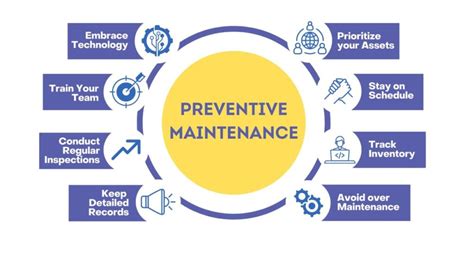Intro
Discover effective sprained foot treatment options, including pain relief, physical therapy, and orthotics, to alleviate symptoms and promote healing for ankle and foot injuries, sprains, and strains.
A sprained foot can be a painful and debilitating injury, affecting daily activities and overall quality of life. The foot is a complex structure composed of multiple bones, ligaments, and tendons, making it prone to various types of injuries. A sprain occurs when the ligaments that connect the bones in the foot are stretched or torn, often due to sudden twisting, rolling, or landing awkwardly on the foot. The severity of a foot sprain can range from mild to severe, and treatment options vary depending on the extent of the injury. In this article, we will delve into the world of sprained foot treatment options, exploring the various methods and techniques used to alleviate pain, promote healing, and restore function to the affected foot.
The importance of seeking proper treatment for a sprained foot cannot be overstated. If left untreated or inadequately treated, a foot sprain can lead to chronic pain, instability, and increased risk of further injury. Furthermore, a sprained foot can also affect other parts of the body, such as the ankle, knee, and hip, due to compensatory mechanisms and altered gait patterns. Therefore, it is essential to consult a healthcare professional for an accurate diagnosis and treatment plan. With the right treatment approach, individuals can expect to recover from a foot sprain and return to their normal activities without long-term consequences.
The diagnosis of a foot sprain typically involves a physical examination, medical history, and imaging tests such as X-rays or MRI scans. A healthcare professional will assess the severity of the sprain, taking into account factors such as pain, swelling, bruising, and limited mobility. The diagnosis will guide the treatment plan, which may involve a combination of conservative and surgical interventions. In the following sections, we will explore the various treatment options for a sprained foot, including non-surgical methods, surgical procedures, and rehabilitation techniques.
Sprained Foot Treatment Options

Non-Surgical Treatment Methods
Non-surgical treatment methods are often the first line of defense against a sprained foot. These methods aim to reduce pain, inflammation, and swelling, while promoting healing and restoring function to the affected foot. Some common non-surgical treatment methods include: * Rest, ice, compression, and elevation (RICE) to reduce pain and inflammation * Pain relief medications such as acetaminophen or ibuprofen * Orthotics and shoe modifications to reduce stress on the affected foot * Physical therapy exercises to improve range of motion, strength, and flexibility * Bracing or taping to provide support and stability to the footMedications and Pain Relief

Medications play a crucial role in managing pain and inflammation associated with a sprained foot. Over-the-counter pain relievers such as acetaminophen or ibuprofen can help reduce pain and discomfort. In some cases, prescription medications such as muscle relaxants or corticosteroids may be necessary to manage more severe symptoms. However, it is essential to use medications under the guidance of a healthcare professional to avoid potential side effects and interactions.
Surgical Treatment Options
In some cases, surgical intervention may be necessary to treat a sprained foot, particularly if the injury is severe or if conservative treatment methods have failed. Surgical procedures may involve repairing or reconstructing damaged ligaments, tendons, or bones. Some common surgical treatment options include: * Ligament repair or reconstruction * Tendon repair or reconstruction * Bone fracture reduction and stabilization * Arthroscopy to diagnose and treat internal foot injuriesSurgical Procedures

Surgical procedures for a sprained foot are typically performed under general anesthesia or regional anesthesia. The type of surgical procedure will depend on the severity and location of the injury. In some cases, arthroscopy may be used to diagnose and treat internal foot injuries, such as ligament or tendon damage. Open surgery may be necessary for more complex injuries, such as bone fractures or severe ligament damage.
Rehabilitation and Recovery
Rehabilitation and recovery are critical components of sprained foot treatment. The goal of rehabilitation is to restore function, strength, and mobility to the affected foot, while promoting overall healing and recovery. Some common rehabilitation techniques include: * Physical therapy exercises to improve range of motion, strength, and flexibility * Orthotics and shoe modifications to reduce stress on the affected foot * Bracing or taping to provide support and stability to the foot * Gradual return to activity, including sports or exercise programsRehabilitation Techniques

Rehabilitation techniques for a sprained foot are designed to promote healing, reduce pain, and restore function to the affected foot. Physical therapy exercises, such as ankle circles, toe raises, and heel raises, can help improve range of motion, strength, and flexibility. Orthotics and shoe modifications can reduce stress on the affected foot, while bracing or taping can provide support and stability.
Prevention and Maintenance
Prevention and maintenance are essential for avoiding future foot sprains and promoting overall foot health. Some common prevention and maintenance techniques include: * Wearing proper footwear, including shoes with good arch support and cushioning * Stretching and warming up before exercise or sports activities * Strengthening foot and ankle muscles through exercises and physical therapy * Avoiding uneven or slippery surfacesPrevention and Maintenance

Prevention and maintenance techniques can help reduce the risk of future foot sprains and promote overall foot health. Wearing proper footwear, including shoes with good arch support and cushioning, can reduce stress on the foot and ankle. Stretching and warming up before exercise or sports activities can help prepare the foot and ankle for physical activity, reducing the risk of injury.
Conclusion and Final Thoughts
In conclusion, a sprained foot can be a painful and debilitating injury, affecting daily activities and overall quality of life. However, with proper treatment and care, individuals can expect to recover from a foot sprain and return to their normal activities without long-term consequences. By understanding the various treatment options, including non-surgical and surgical methods, individuals can make informed decisions about their care. Remember to consult a healthcare professional for an accurate diagnosis and treatment plan, and don't hesitate to ask questions or seek a second opinion if necessary.What are the most common causes of a sprained foot?
+The most common causes of a sprained foot include sudden twisting, rolling, or landing awkwardly on the foot, as well as overuse or repetitive strain on the foot and ankle.
How long does it take to recover from a sprained foot?
+Recovery time for a sprained foot can vary depending on the severity of the injury, but most people can expect to recover within 2-6 weeks with proper treatment and care.
Can I prevent a sprained foot?
+Yes, you can reduce the risk of a sprained foot by wearing proper footwear, stretching and warming up before exercise or sports activities, and strengthening foot and ankle muscles through exercises and physical therapy.
We hope this article has provided you with a comprehensive understanding of sprained foot treatment options. If you have any questions or comments, please don't hesitate to share them below. Additionally, if you found this article helpful, please consider sharing it with others who may be experiencing similar issues. By working together, we can promote awareness and education about foot health and provide support to those affected by foot injuries.
